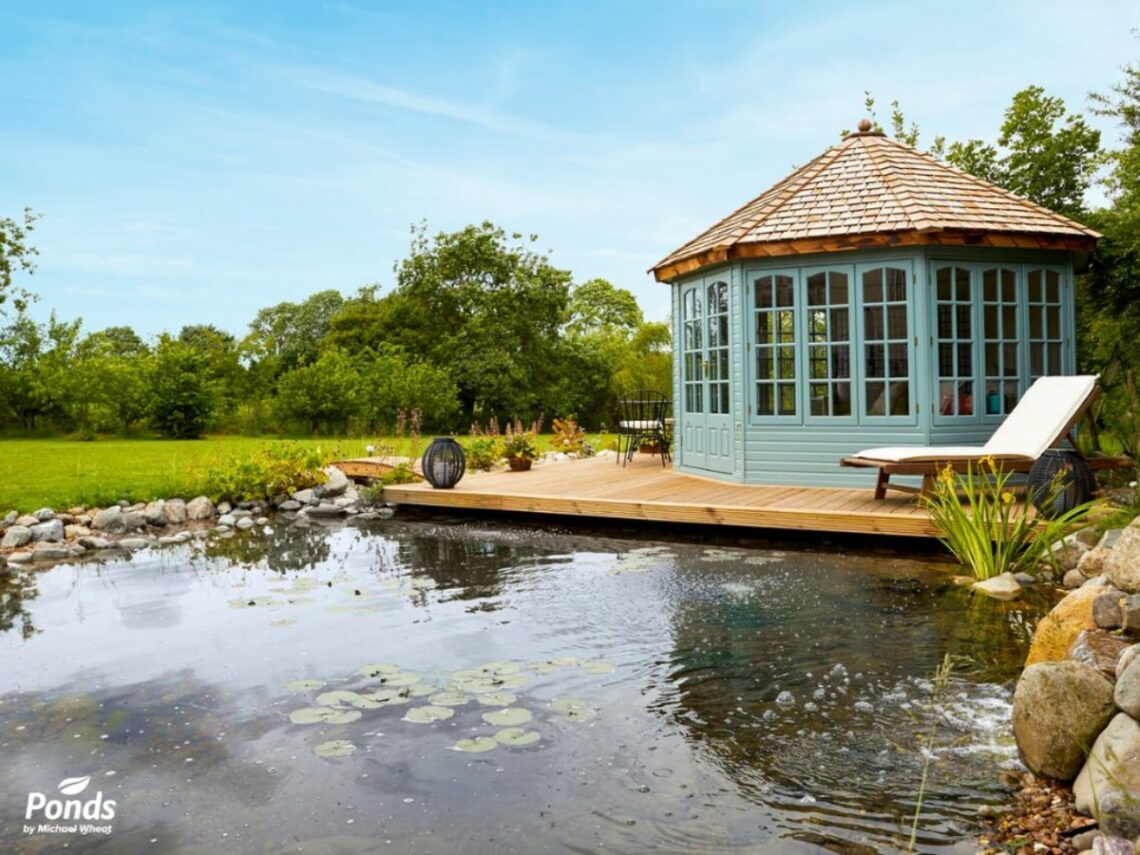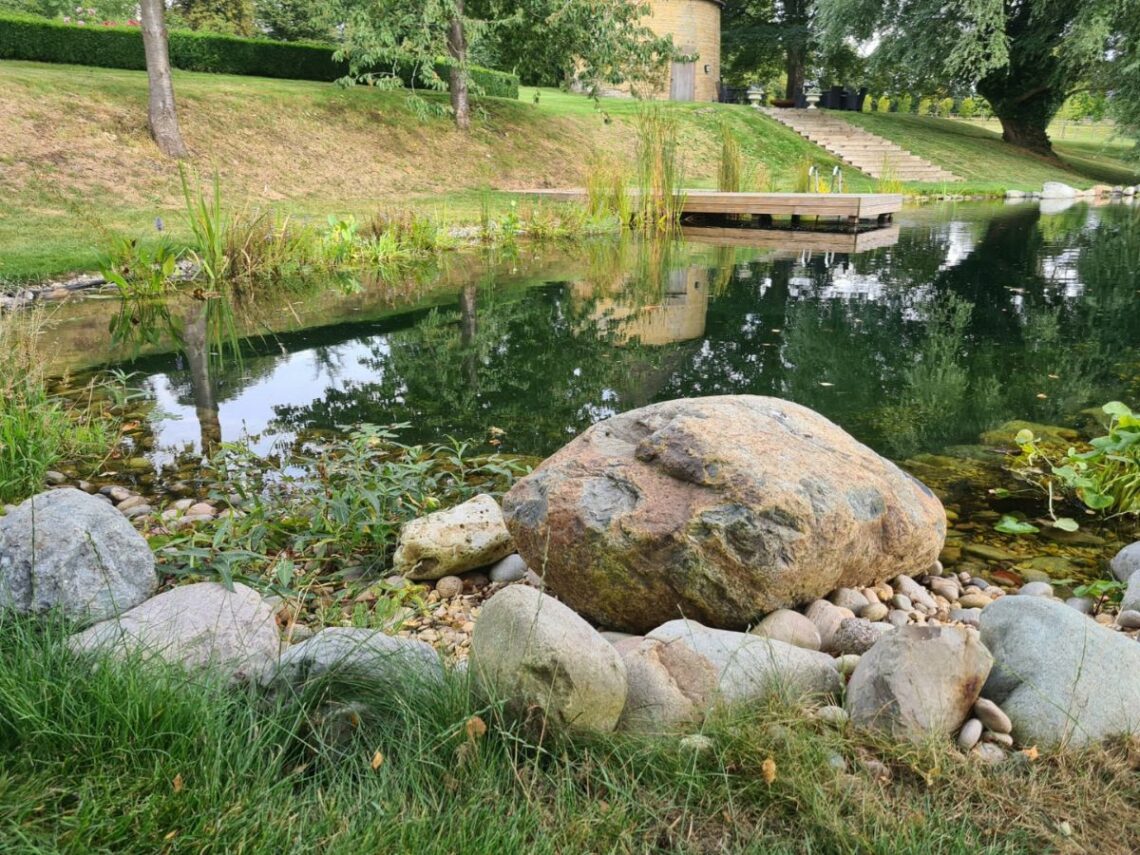Ponds by Michael Wheat
Immerse yourself in luxury with our bespoke natural water swimming pool – a chlorine-free oasis crafted to elevate your surroundings. Our expert team transforms your garden into a freshwater paradise in just 3-6 months, with eco-friendly design and space-saving filtration. Award-winning designers create this opulent natural pool, redefining luxury and harmonizing with nature. Discover more here.
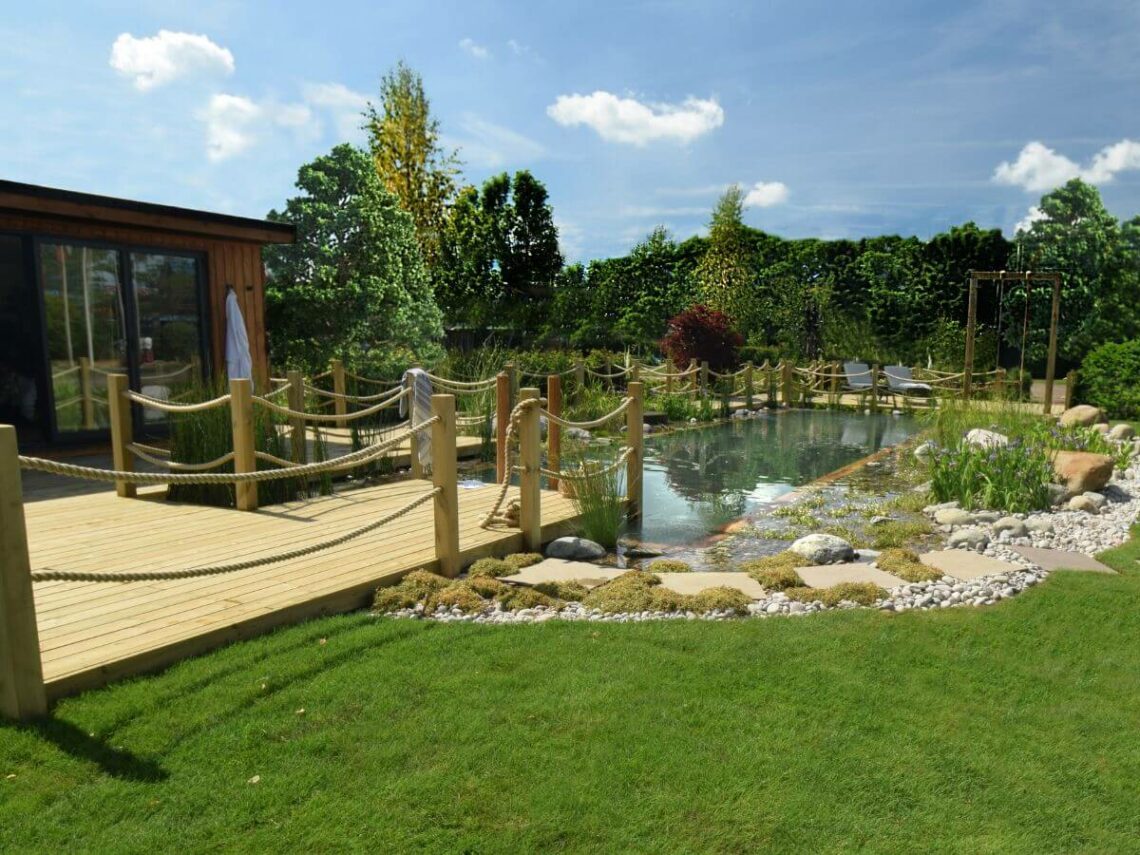
Swimming Ponds
Discover how a natural water swimming experience can bring you and nature together and fit harmoniously into your surroundings.
The Ponds by Michael Wheat 4 – Step Process to your Dream Pond
Your journey to the best natural swimming pool or pond.
Step 1
Starting your journey
You have an empty garden space or an existing pond or pool to convert. You are just a call away from starting your journey.
Listen to our Pond designer on how your call will go when you start your journey.
Step 2
Site visit & Site Survey
Our Design plan starts with a site visit and a site survey from our Pond Design Consultant.
Using the latest technology, we analyse your space and commence the consultation of your project with a collaborative approach to bring your vision to reality.
We charge £997 for our pond design plan service or £1797 for our swimming pond design plan service. This professional and comprehensive service ensures we accurately cost our projects, giving great value and creating a pond for our clients which meets their vision and budget.
Step 3
Designing your dream and bringing it to reality!
We understand it can be difficult to visualise your dream, so we do our utmost to ensure we bring your dream to reality before installation. You will receive a concept model – technical drawings – 2D & 3D renders and a 3D virtual Tour.
Step 4
Installation
Successful project completion typically takes 3-6 months from your enquiry.
You will be assigned a project manager to oversee the installation ensuring the project is completed to a high standard.
The installation will take from 2-6 weeks. Check out the timelapse of a hybrid swimming pond installation.
Your Paradise from home…
Our Goal is for you to have your dream Pond to enjoy with your friends and family for many a year!
We ensure your project is completed efficiently to the highest standard. Installing the best filtration not only to keep the freshwater crystal clear and safe to swim in but to easy maintain. However, rest assured for those with busy lifestyles we offer maintenance packages. plus, our labour is guaranteed and all equipment such as liner and filtration have their manufacturers guarantee. We have unrivalled after-care, servicing clients for over 13 years and we are committed to continue for many years to come.
READ our 5 Star Google reviews


We are so pleased we chose Michael Wheat Swim ponds. The service from first site visit to installation has been exceptional. When we received the concept video we were blown away and I never expected the final product to live up to the video. Installation has taken just 4 weeks, the team, led by Gavin, were so professional and involved us in the process all the time. Our dogs absolutely loved them especially Joel!!!
The service doesn’t stop here, with several site visits planned to make sure everything is up and running as it should be.
If you are looking for a swimpond look no further, you won’t regret it.
Happy swimming 🏊🏊
– Karen
Client Testimonials
Swimming pond
Creating the ideal garden swimming pool or natural pond only requires a quick call to start your journey. We understand it might be difficult for you to know what you want, unless you know what the possibilities are. Having built so many ponds and pools over the years, and an award-winning one, we’ll listen, then advise, and collaborate to help make your pond or pool project the best it can be for you.
Wildlife pond
Creating the ideal garden space with a tranquil pond to attract beautiful wildlife only requires a quick call to start your journey. We understand it might be difficult for you to know what you want, unless you know what the possibilities are. Having built so many ponds and pools over the years, and an award-winning one, we’ll listen, then advise, and collaborate to help make your pond or pool project the best it can be for you.
Why choose Ponds by Michael Wheat?
It’s our expert pond, pool and plant knowledge that sets us apart.
Proven track record, tried and tested results
Established 2010 we soon became the best pond designers and pond installers in the UK.
Experts in creating fish-friendly environments, specifically koi ponds.
Koi thrive in clean water, so we focused on pond designs and fish ponds that featured wildlife pond plants, chemical-free, biological filtration systems, and UV technology to keep the water naturally fresh. This created an eco-pool-style wildlife pond habitat which saves money on maintenance, as well as saving the environment.
It was soon clear that by creating the perfect environment for nature’s most discerning fish, we’d developed the best natural swimming pond formula too.
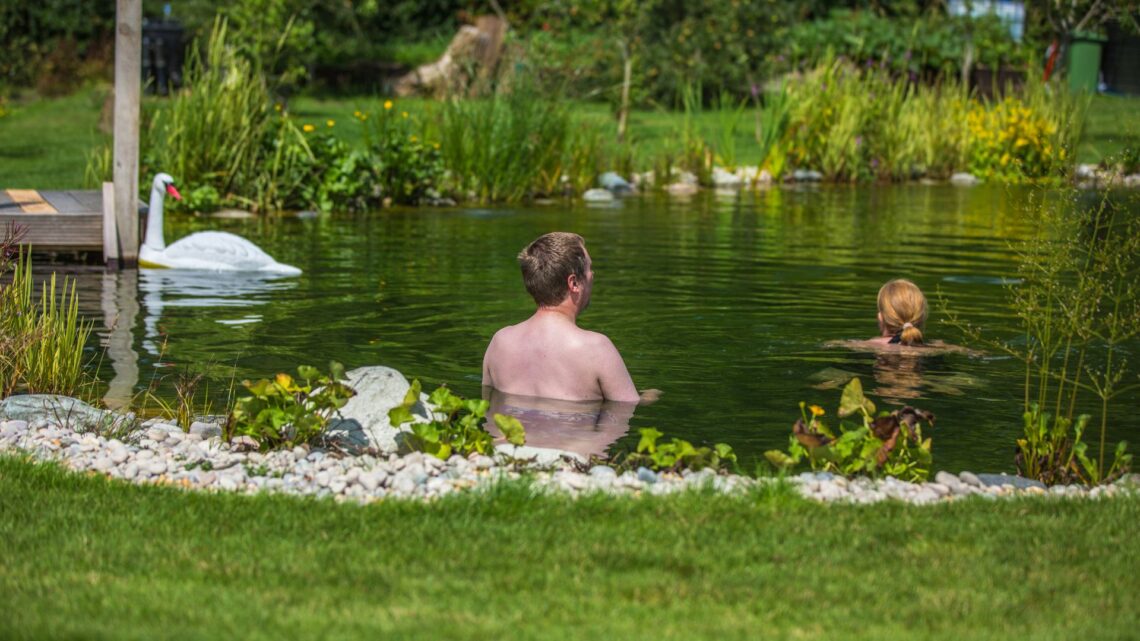
The SAFEST swimming ponds…
Don’t believe us? What about a biochemist and microbiologist? Caroline said the following during her Pondcast with Michael Wheat.
“Yes absolutely, the combination of elements all solves (Michael Wheat System) a scientific issue. If you just had one of the parts of that system, my feeling is it wouldn’t work. I remember doing my research on swimponds, it took me 4 or 5 years before I had made up the decision to have the pond installed.
I was just not convinced that just the aquatic plants would be enough. I think that’s why we have been on this journey for a number of years because YOU are only now at the point with your system where EACH part of your set up addresses the scientific problem of safe water.”
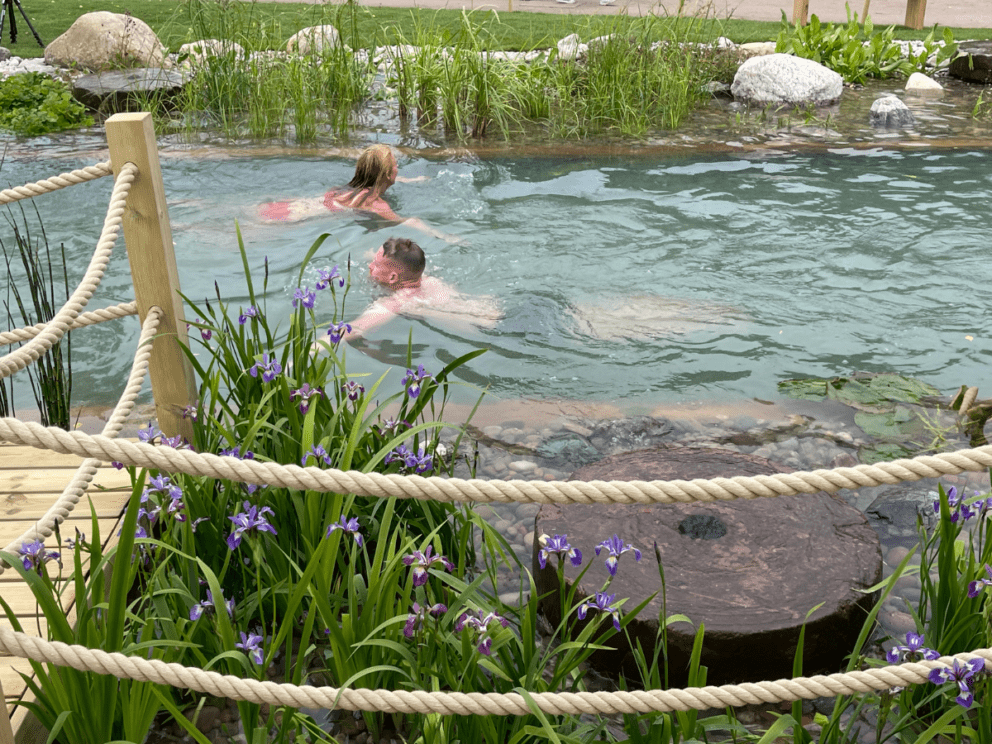
Fast forward to today.
Following enhancements to our garden pond design process and successful completion of numerous easy-maintenance, natural swimming ponds, our acquired knowledge enables us to design and build the best chlorine FREE swimming ponds, whilst our expertise avoids costly mistakes.
We continue to be leading pond builders completing pond installations and freshwater swimming pool installations throughout the UK. You can view our Award winning swimming pond in the YouTube video.
We build koi ponds, fish ponds and wildlife ponds, right up to stunning natural swimming ponds, so you can enjoy the exhilaration of freshwater swimming all year round.
Your pond or pool project will be designed and installed with minimal fuss, to bring you hours of delight.
Simply take the next step.
Why invest in the best natural pond or best natural pool?
Avoid hassle and disappointment.
It’s tempting to try to save money by taking pond or pool building on as a project or contracting it out to local builders.
Builders are great, at bricks and mortar, but not at designing a natural, finely balanced ecosystem in your garden. Their knowledge won’t extend to pond technology, plants or which are the best pumps, filters, and pond liners to use.
Partner with an expert natural pond designer and installer.
You can avoid potential problems, such as:
- An unsightly, unfinished garden project
- A missed opportunity to add more value to your property
- Waiting months or years to improve your lifestyle
- Skin conditions caused by cleaning chemicals
- Stinging eyes and chlorine smell whilst swimming
- Missing out on spending time with your family
Your guide to pond prices and swimming pond prices
Examples of typical projects are shown below
Swimming ponds and natural pools
View completed projects >
How much does a natural swimming pool cost?
Invest in an improved lifestyle.
From £75,000
Koi-ponds
View completed projects >
How much does a koi-pond or fish pond cost?
Experience a feeling of calm in your garden.
From £45,000
Wildlife ponds
View completed projects >
How much does a wildlife pond cost?
Create a haven for wildlife in your Garden space.
From £25,000
Pond and pool maintenance
Learn more >
How much does a maintenance package cost?
Enjoy the convenience of reliable aftercare package bespoke to the individual.
From £1,500
Learn about ponds and swimming ponds from the experts
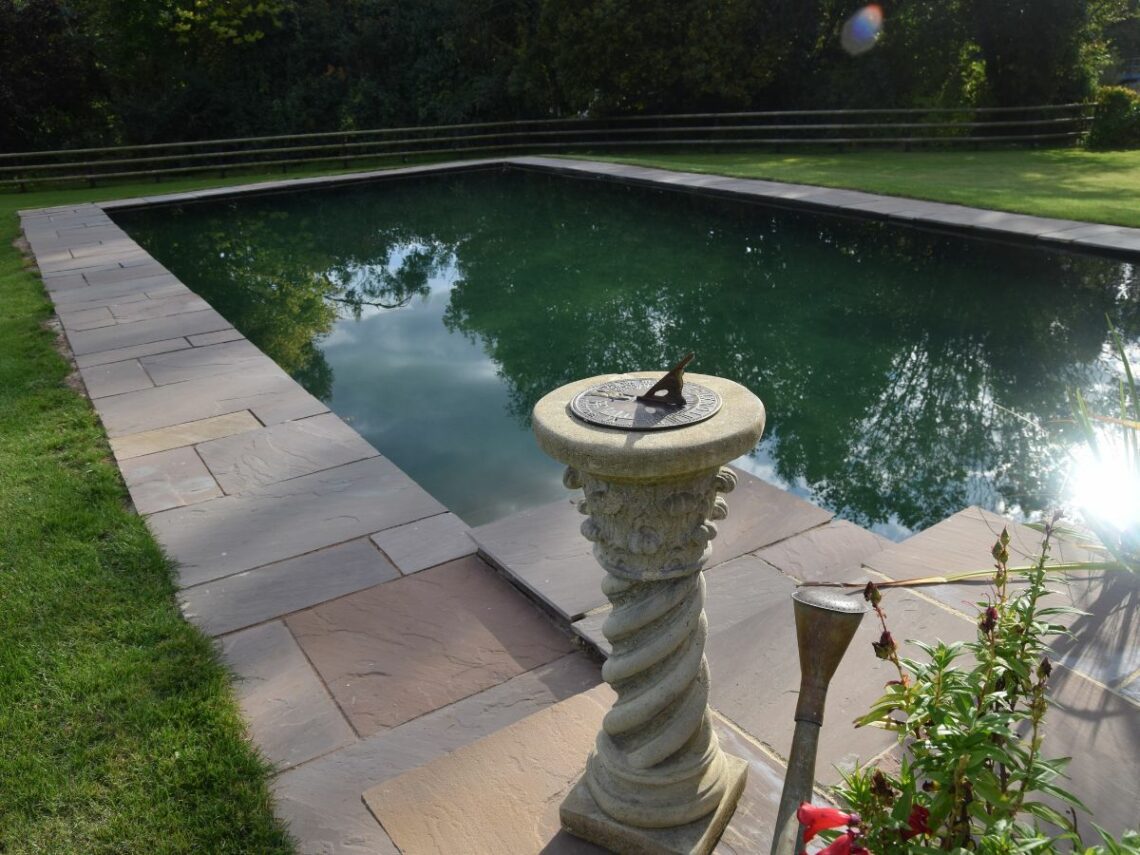
Creating Your Oasis: How to Make a Natural Swimming Pond
Planning Your Natural Swimming Pond
Creating a natural swimming pond can be a refreshing and eco-friendly addition to your garden. Unlike traditional swimming pools, these ponds merge seamlessly with the natural landscape, providing a serene and rejuvenating swimming experience. To ensure your swimming pond is not only beautiful but also functional, it’s essential to plan carefully.
In this section, we’ll walk you through the initial steps of designing and constructing your own natural swimming pond.
[…]
Read more >
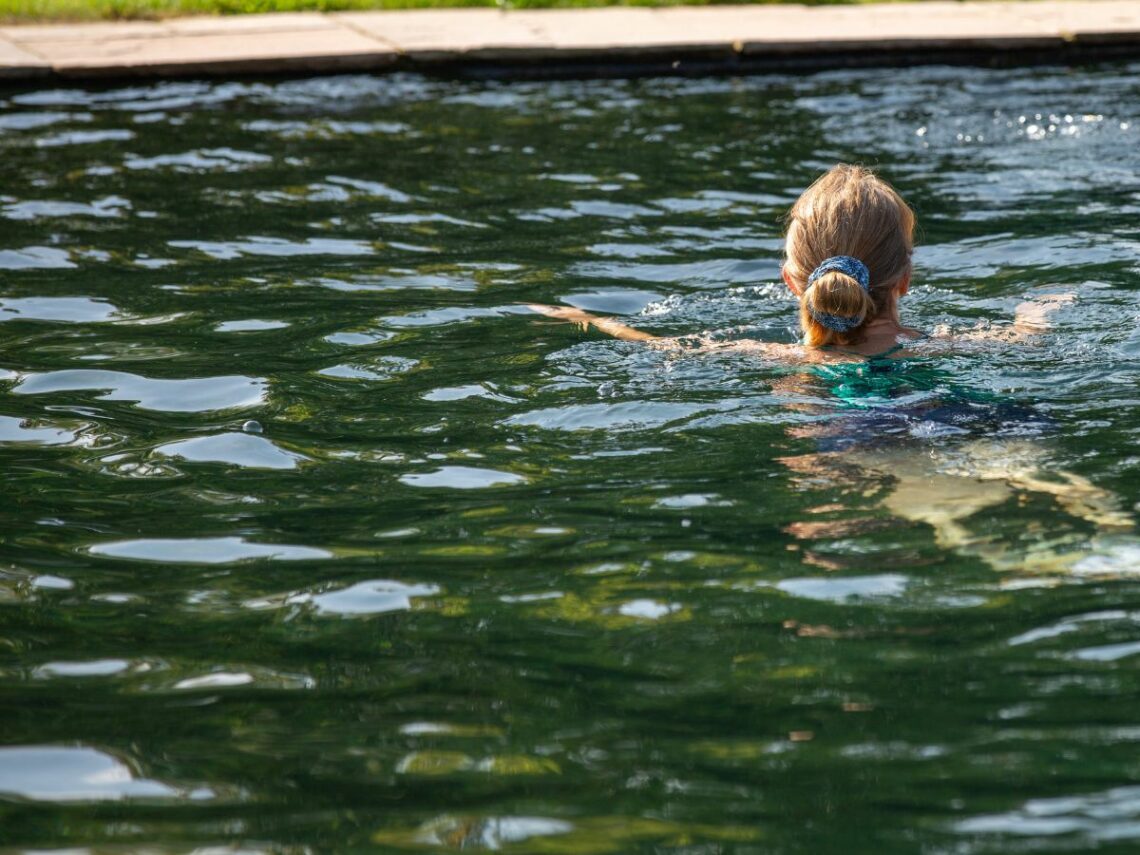
Can You Swim in a Pond: Our Definitive Guide
Dive into nature with a swim pond. It’s a garden gem where wild meets the styled. Swap chlorine for crystal-clear, natural waters.
It’s more than a swim; it’s an adventure in your backyard. Curious?
Let’s dive into the wonders and workings of swim ponds in the sections below. Your natural escape awaits.
[…]



